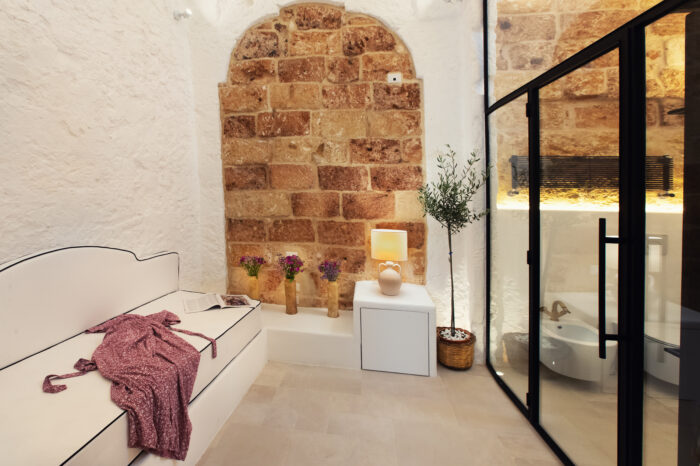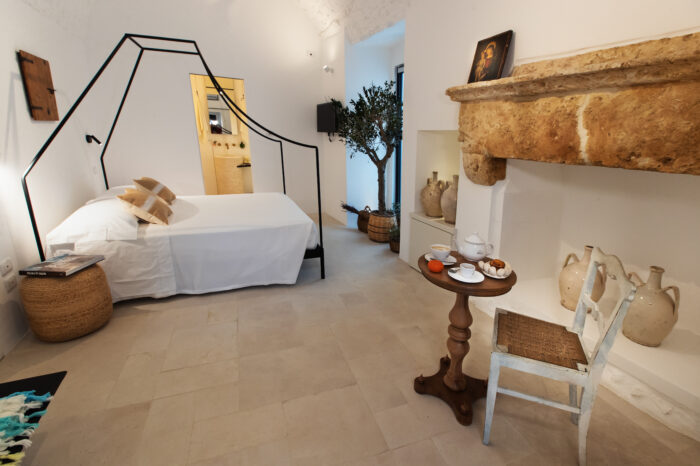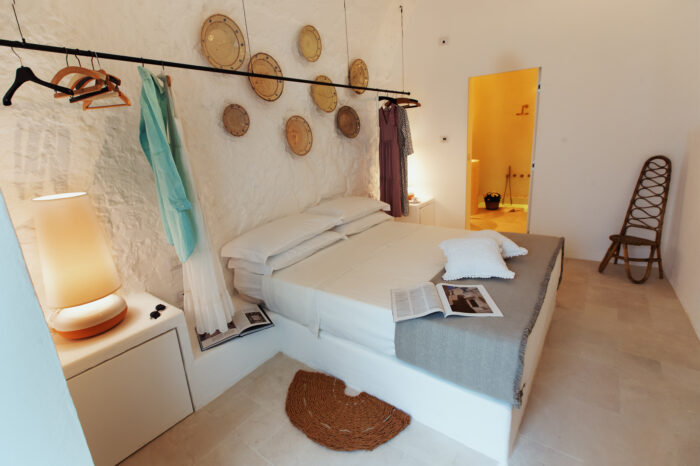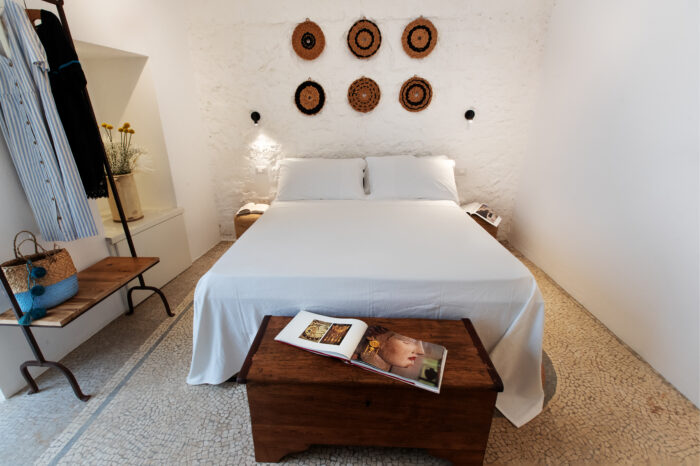Territory
A thousand year history
Hinterland
Alessano
Alessano, a charming village in the Salento region, has its roots in mysterious legends. The name is said to derive from the Byzantine emperor Alexius I Comnenus, but other theories link it to people from the river Ales, from Alesia in Gaul, or even to shipwrecks from Epirus. A curious hypothesis holds that Daedalus, fleeing from Crete, named the town “Alessano” for its “healthy wings”, as depicted in its coat of arms. Although there is no certain evidence on the origins, the Greek etymology of the name, “alexo” (I repel, I protect), suggests that the town was an ancient military garrison.
Throughout history, Alessano acquired a prominent position, especially under the Normans, who made it a bishopric until 1818. In the 15th and 16th centuries, the town experienced a period of great prosperity, becoming an important trading centre thanks to noble families such as the Della Ratta, Del Balzo, De Capua and Gonzaga families. During this period, the town was enriched with Renaissance palaces, including the Palazzo Legari, Palazzo Orsi and the Palazzo Ducale, which bear witness to its splendour.
The historical centre of Alessano still retains the charm of a Mediterranean village, with its narrow streets, alleys, squares and courtyard houses, some of which have wells and stone stacks. The architecture, mixing Arab and Greek influences, is enriched by sculpted portals and elegant balconies, creating a unique atmosphere. Corte Manfredi, an ancient Salento dwelling that has recently been skilfully and finely restored as an exclusive accommodation facility, also fits into this context.
Alessano is a destination that enchants with its history, its architectural heritage and the charm of its historic centre, offering visitors a journey into the authentic heart of Salento.
Inhabitants nickname: sciudei.
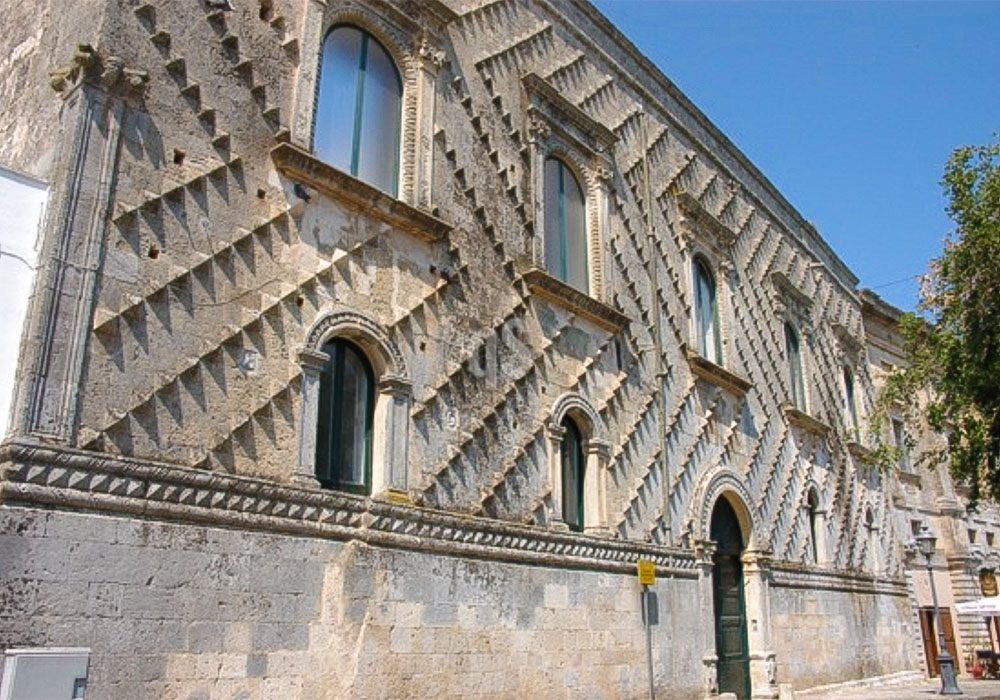
Macurano
Macurano is what remains of an ancient village whose remains are located about two kilometres south-east of Alessano. It consists of two distinct settlements, composed of caves dug into the tuff that forms the last fringe of the Montesardo hill. The two settlements are separated by an ancient road that still bears the deep marks of the passage of carts.
The first settlement, which is better preserved, consists of a series of caves, the largest of which communicates with other smaller ones and is overlooked by another with several niches.
There are numerous cross-shaped engravings on the walls. The presence of millstones and piles inside suggest that it was once a “trappeto”.
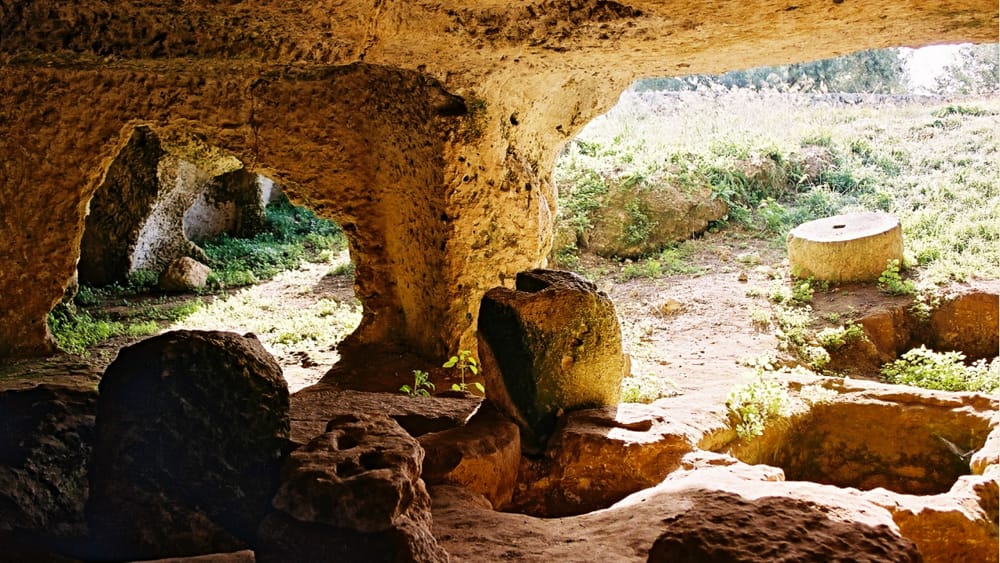
Presicce
Presicce, a small jewel of the lower Salento region, is famous for its underground oil mills, no fewer than 23, which have earned it the nickname “City of the Hypogea”. But the Salento village offers much more: a historical centre rich in churches and noble palaces, a landscape embellished by centuries-old olive trees and Renaissance masserias. Its streets tell a story of agricultural traditions, with olive oil as the main economic source since centuries past.
The town stands in a valley rich in water, an element that favoured the first settlements. The name Presicce may derive from the Latin “praesidium”, indicating an ancient military garrison. Over the centuries, Presicce became an important agricultural centre, with the birth of the trappeti, underground oil mills dug into caves, which for decades were the beating heart of the local economy.
In the 19th century, many oil mills were abandoned, but since the 1990s they have been restored and opened to the public as a tourist attraction, offering a fascinating journey into the past. Another characteristic feature of the ancient village of Presicce are the numerous “a corte” houses, small dwellings dating back to the 16th century, with their internal courtyard that housed daily activities such as the wash-house and the well.
Among the historical buildings, the Palazzo Ducale, home to the Museum of Rural Civilisation, and the Casa Turrita, a medieval testimony to Presicce, stand out. No less significant are the churches, such as the splendid Church of Sant’Andrea Apostolo and the Arditi Chapel, with its Baroque-Rococo façade.
Presicce is an ideal destination for those seeking history, art and traditions in an authentic corner of Apulia.
Inhabitants nickname: mascarani.

Specchia
Specchia, an enchanting village situated on a hill, takes its name from the term “specchia”, meaning a pile of stones used in the past as a lookout and defence point. This defensive character is still reflected today in its charming historic centre, one of the best preserved in the lower Salento. Strolling through narrow alleys, flights of steps and dry-stone walls, it seems as if time has stood still, creating an atmosphere suspended between past and present.
The heart of the village, which develops around the castle, is a labyrinth of narrow pedestrian streets and remains of the ancient walls. Here you will find portals in Lecce stone, loggias and hanging arches, as well as friezes, statues and votive aedicules with sacred images that tell the story of Specchia. A curious detail are the masks, decorations placed above the doors of houses, with different facial expressions – angry, amused or mocking – used in the past to drive away evil spirits.
Among the places of interest, Piazza del Popolo stands out, surrounded by elegant palaces, such as the 16th-century Palazzo Risolo and the Palazzo Baronale Ripa. Also worth visiting are the Church of the Presentation of the Blessed Virgin Mary, dating back to the 15th century, the Church of Our Lady of the Assumption, the Chapel of St. Catherine Martyr and the Church of St. Euphemia, which further enrich Specchia’s historical charm.
Specchia is a journey through time, an authentic corner of the Salento where every stone tells a story.
Inhabitants nickname: scurlisci.
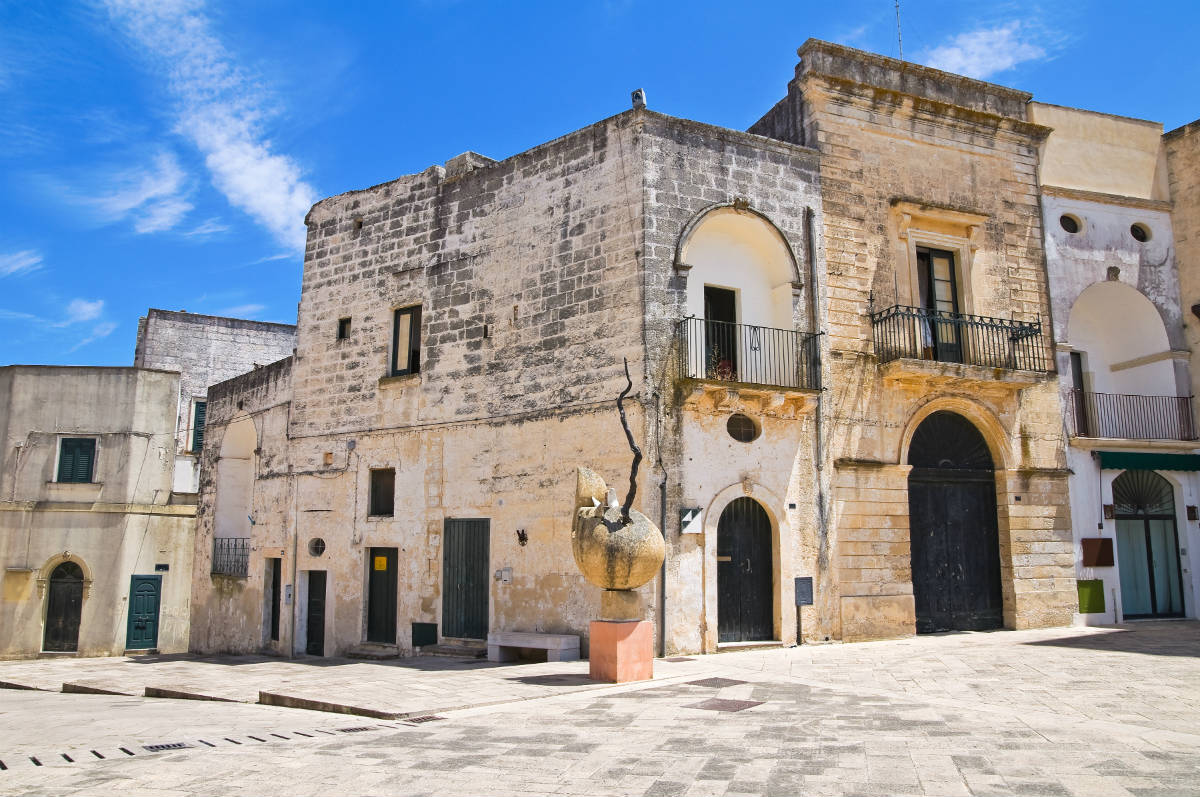
Salve
Salve is a charming town in the lower Salento region, located along the Ionian coast of Capo di Leuca. Founded in 267 B.C. by the Roman centurion Salvius, it became an important centre over time, especially for populations fleeing malaria along the coast. In the 15th century, a fortress was built to defend against Turkish incursions, while coastal towers, such as the famous Torre Pali, protected the territory from pirates.
The town boasts numerous historical treasures, such as fortified palaces, 16th-century towers, and the Church of San Nicola Magno, which houses the oldest organ in Apulia (1628). Also not to be missed is the underground oil mill in the historic centre.
Just a few steps from the sea, Salve is connected to its renowned marinas: Pescoluse (the Maldives of Salento), Torre Pali, Posto Vecchio and Lido Marini.
Inhabitants nickname: ventri ianchi.
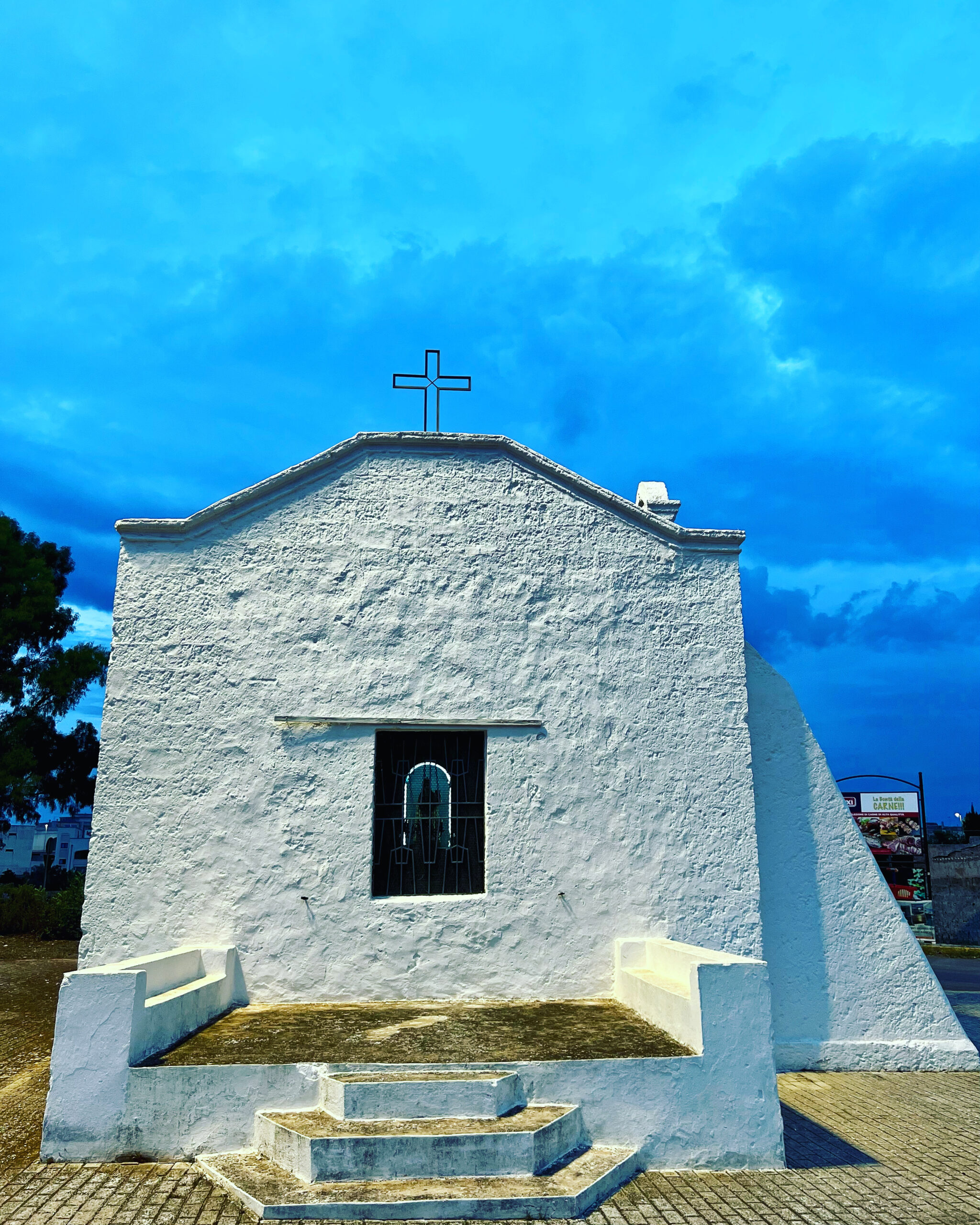
Coast and Marina
Novaglie
Novaglie, an ancient maritime port of call in Alessano, is today one of the most unspoilt areas of the south-east coast, characterised by crystal-clear water, a small harbour and a few houses surrounded by olive trees and Mediterranean scrub. The low cliffs, ideal for diving and fishing enthusiasts, offer breathtaking natural landscapes, often accessible only by sea or through impervious paths.
To the north, there is the Grotta Azzurra, with its spectacular blue hues, and the mysterious Grotta del Diavolo. To the south, on the other hand, you can visit the Grotta Cipolliane, an ancient cave complex, the Grotta del Laghetto, with its crystal-clear water, and the Grotta del Ciolo, a spectacular fjord.
A corner of wilderness to explore.
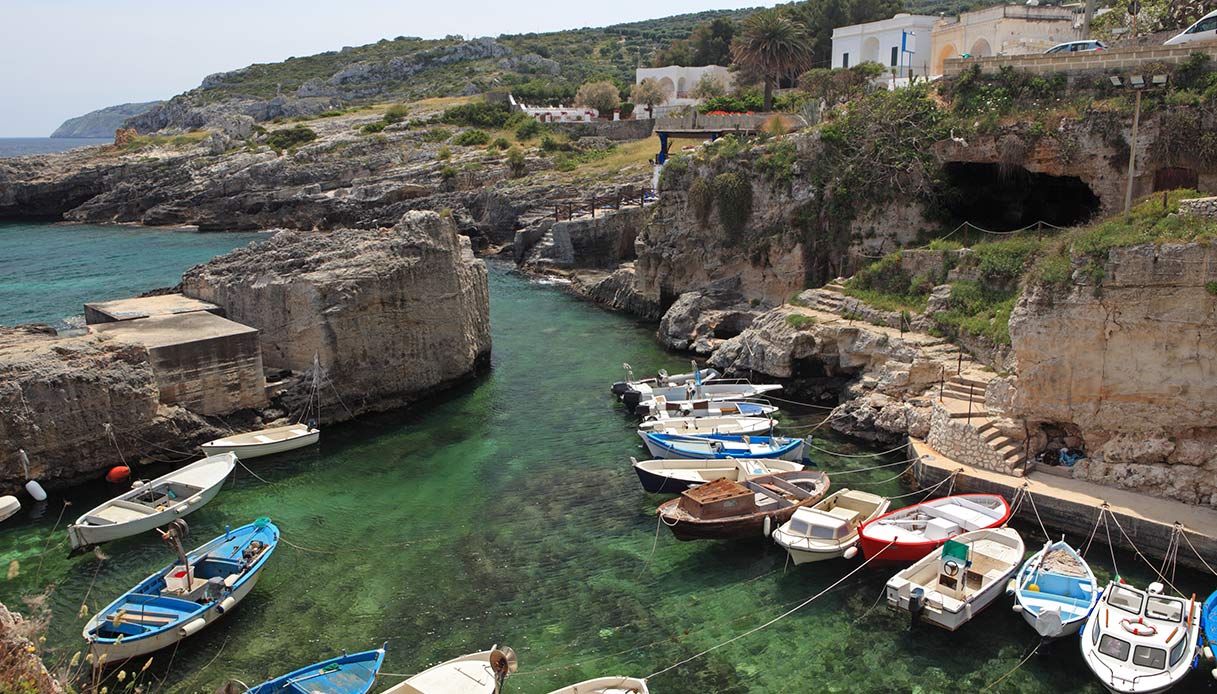
Marina Serra
Marina Serra, a hamlet of Tricase, is an enchanting corner of the coast with about 30 inhabitants, famous for its rocky inlets and natural pools, such as the Canale del Rio. Local legend has it that the devil hollowed out this inlet in one night, but what is really fascinating is the natural beauty of the place, with its crystal-clear waters and Mediterranean maquis vegetation.
Along the coast is Grotta Matrona, accessible only by sea, where the blue reflections of the water create a unique spectacle. Further east, Grotta Acquaviva, with its freshwater springs visible at low tide, is another place not to be missed.
Marina Serra is a corner of paradise, perfect for those seeking tranquillity and natural beauty.
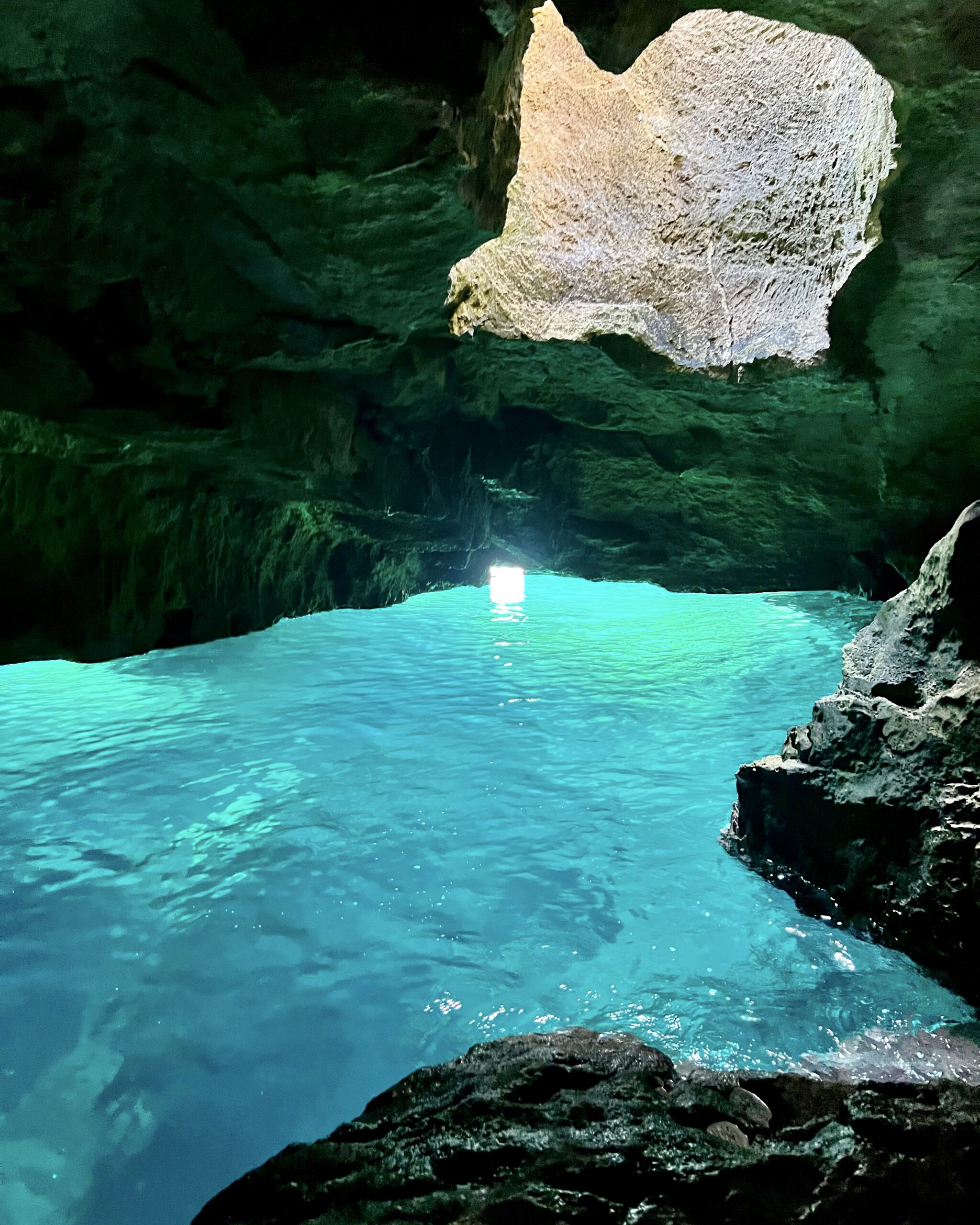
Tricase Porto
Santa Maria di Leuca, the southernmost tip of the Salento, marks the end of the landmass and the separation of the Adriatic and Ionian seas. Its imposing basilica, beneath the majestic lighthouse, is dedicated to Santa Maria De Finibus Terrae. Here, between Punta Meliso and Punta Ristola, the two seas meet, creating a fascinating play of clashing waves.
Leuca boasts a marina, a seafront promenade with palm trees and oleanders, and numerous 19th century Art Nouveau villas, enriched with Arab influences. Another attraction is the Monumental Waterfall, built to celebrate the completion of the Apulian aqueduct.
Santa Maria di Leuca is an ideal place for those seeking a mix of sea, history and fun.
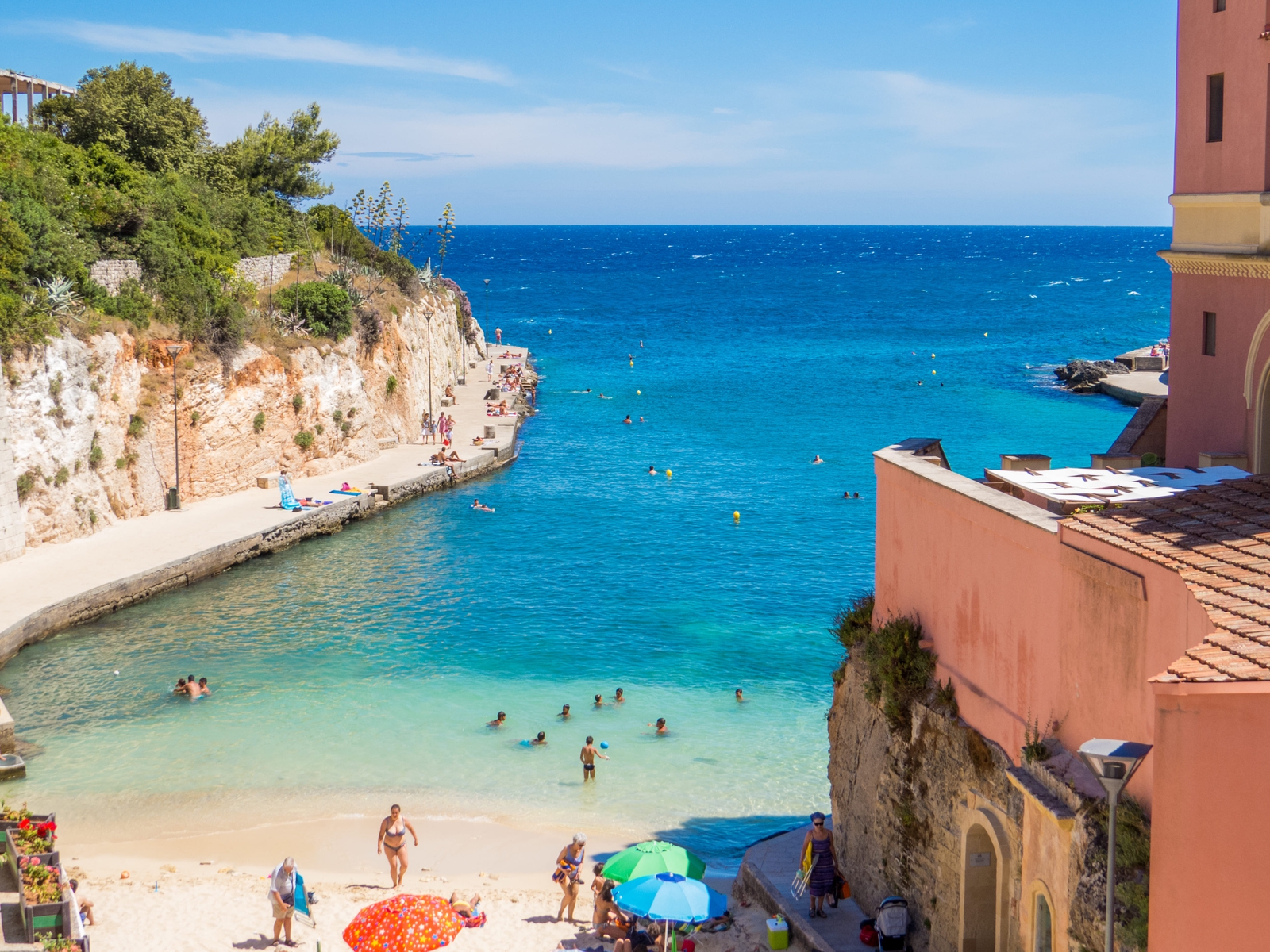
Santa Maria di Leuca
Santa Maria di Leuca, the southernmost tip of the Salento, marks the end of the landmass and the separation of the Adriatic and Ionian seas. Its imposing basilica, beneath the majestic lighthouse, is dedicated to Santa Maria De Finibus Terrae. Here, between Punta Meliso and Punta Ristola, the two seas meet, creating a fascinating play of clashing waves.
Leuca boasts a marina, a seafront promenade with palm trees and oleanders, and numerous 19th century Art Nouveau villas, enriched with Arab influences. Another attraction is the Monumental Waterfall, built to celebrate the completion of the Apulian aqueduct.
Santa Maria di Leuca is an ideal place for those seeking a mix of sea, history and fun.
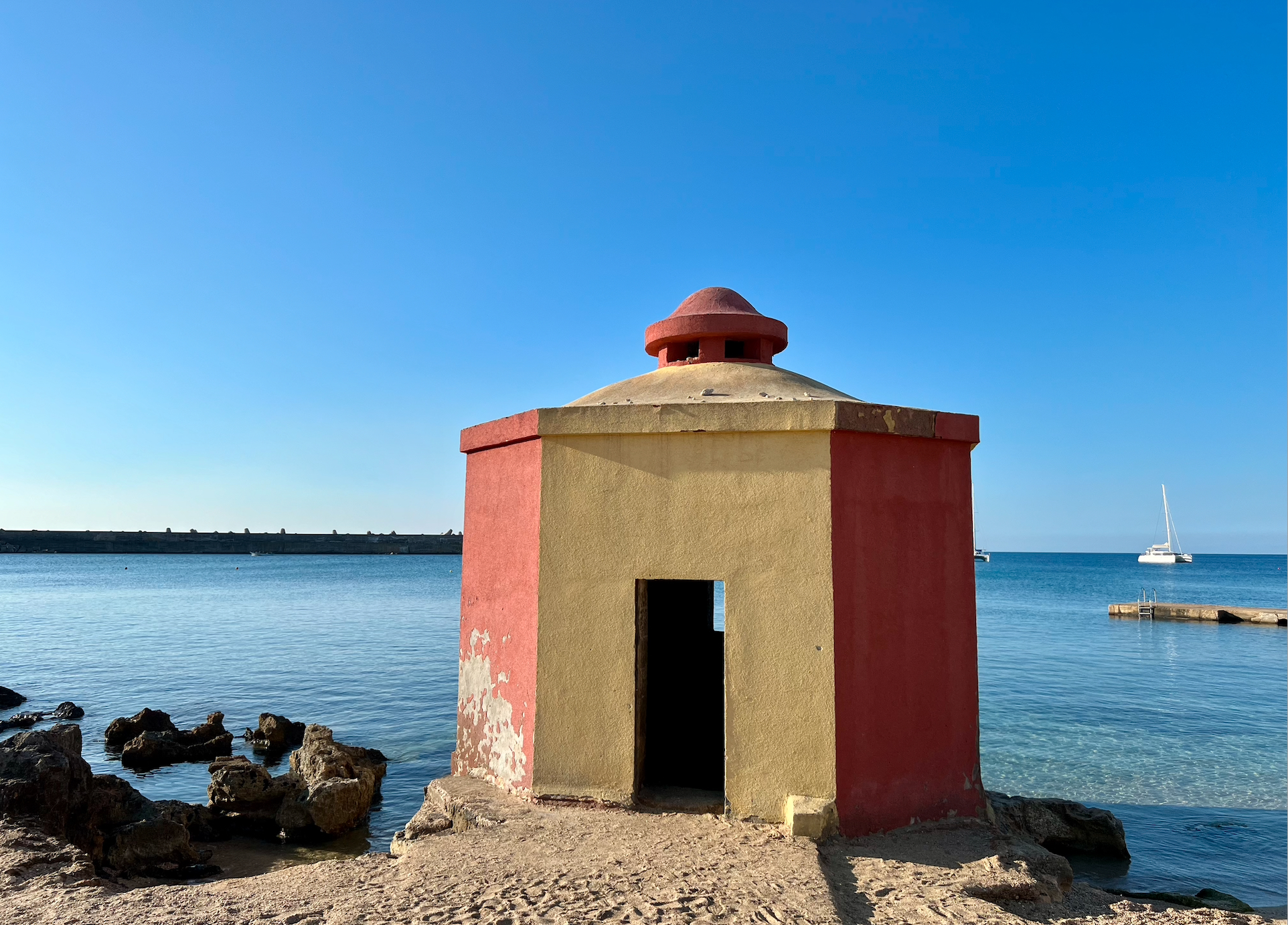
Pescoluse
One of the many marinas of Salve, with its wide coastline about 4 km long, represents a corner of paradise kissed by the sun. An expanse of fine white sand constitutes a wide beach protected by wonderful dunes covered with spontaneous vegetation of acacias and white lilies that separate the crystalline sea from the rest of the world. The shallow waters and the islets that emerge from the clear waters recall distant exotic atolls so much that they deserve the name of Maldives of Salento.
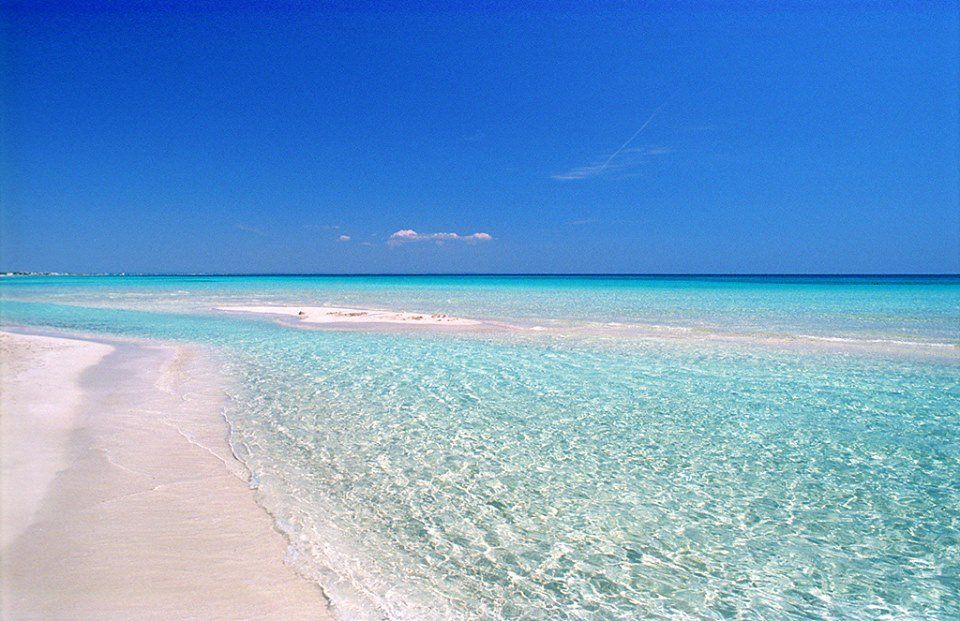
Torre Pali
Torre Pali, one of the marinas of Salve, is a cosy village with a white sandy beach and a marina. Here, houses overlook the sea, and the area offers a fair selection of accommodation and services. The long beach, stretching as far as the historic 16th-century tower, is ideal for snorkelling, with a seabed rich in urchins and molluscs, and extends as far as the Isola della Fanciulla (Island of the Maiden), so named for the legend of the maiden killed by the Saracen pirate Dragut.
The tower, once connected to the mainland, is now surrounded by the sea, making it one of the most fascinating in the Salento. Torre Pali, originally called Marina di Sant’Antonio, owes its current name to the wooden poles that were carried by the sea storms. A corner of history and beauty to be discovered.
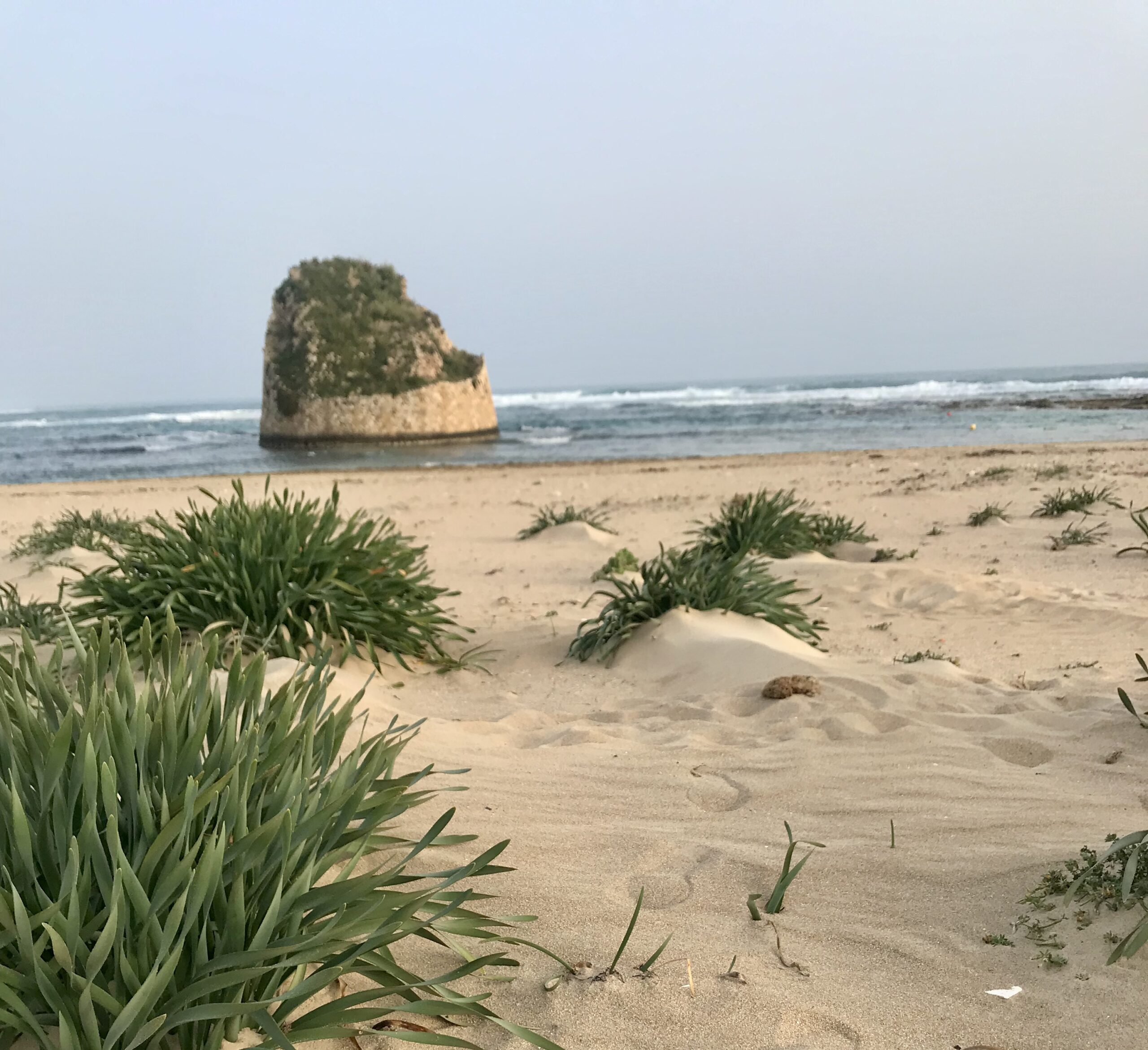
Where we are
Corte Manfredi
Dimora Salentina di Charme
Corte Manfredi 5
73031 – Alessano (Lecce), ItaliaCIN IT075002B400050469
-
-
Booking
Tel.: + 39 0833522138
Tel.: + 39 3388293965
info@cortemanfredi.it

